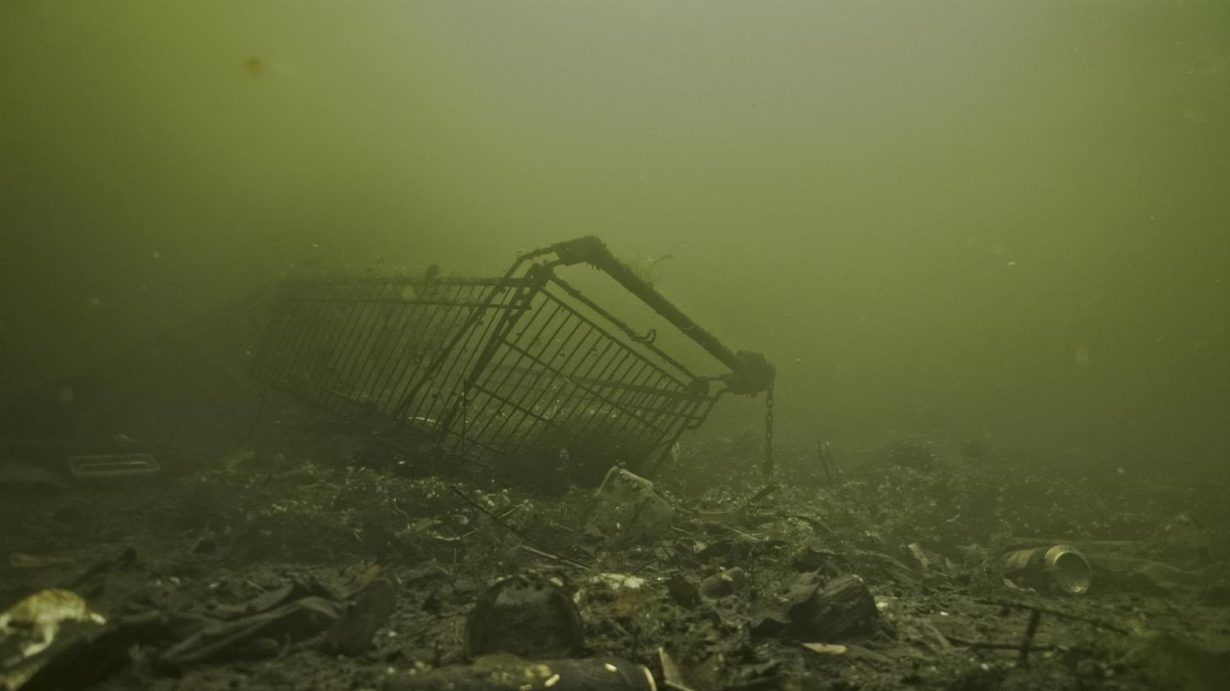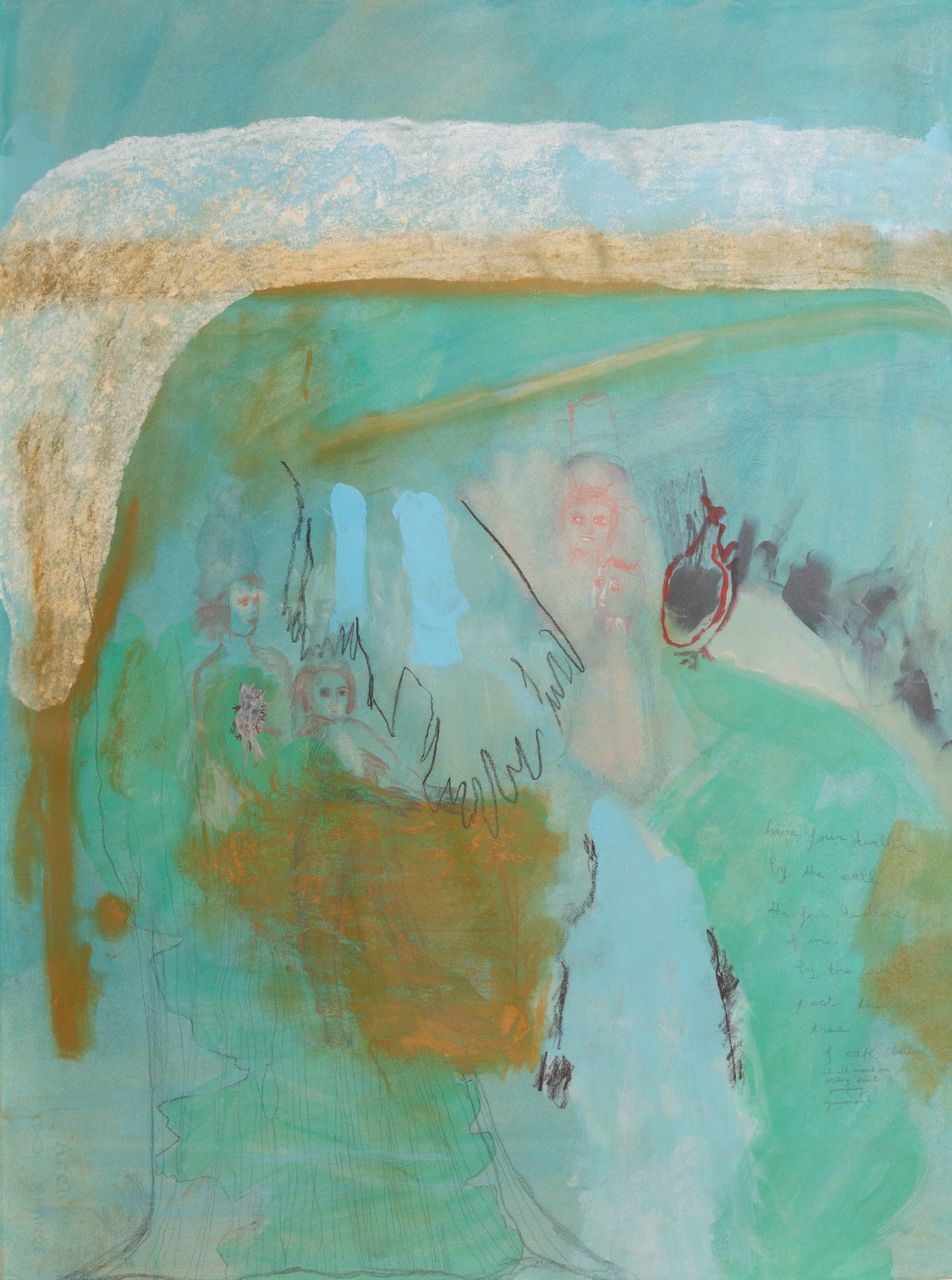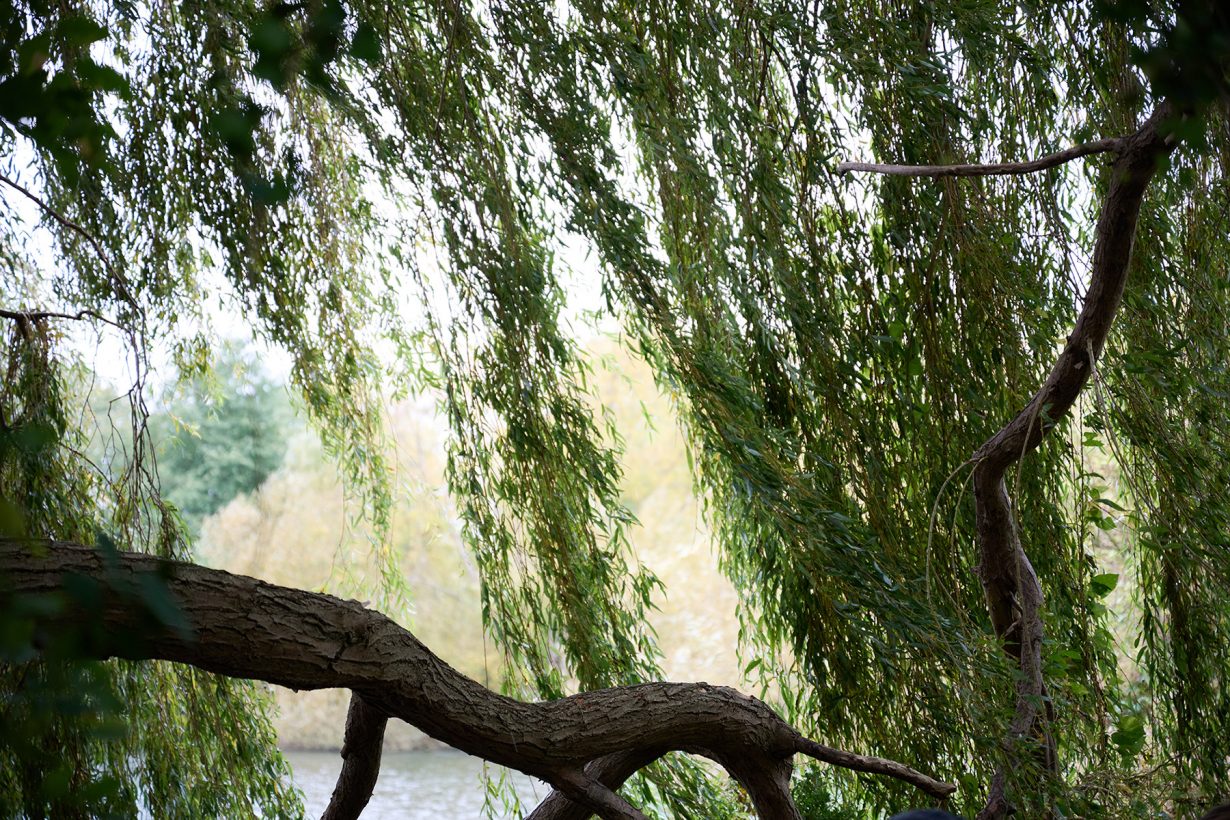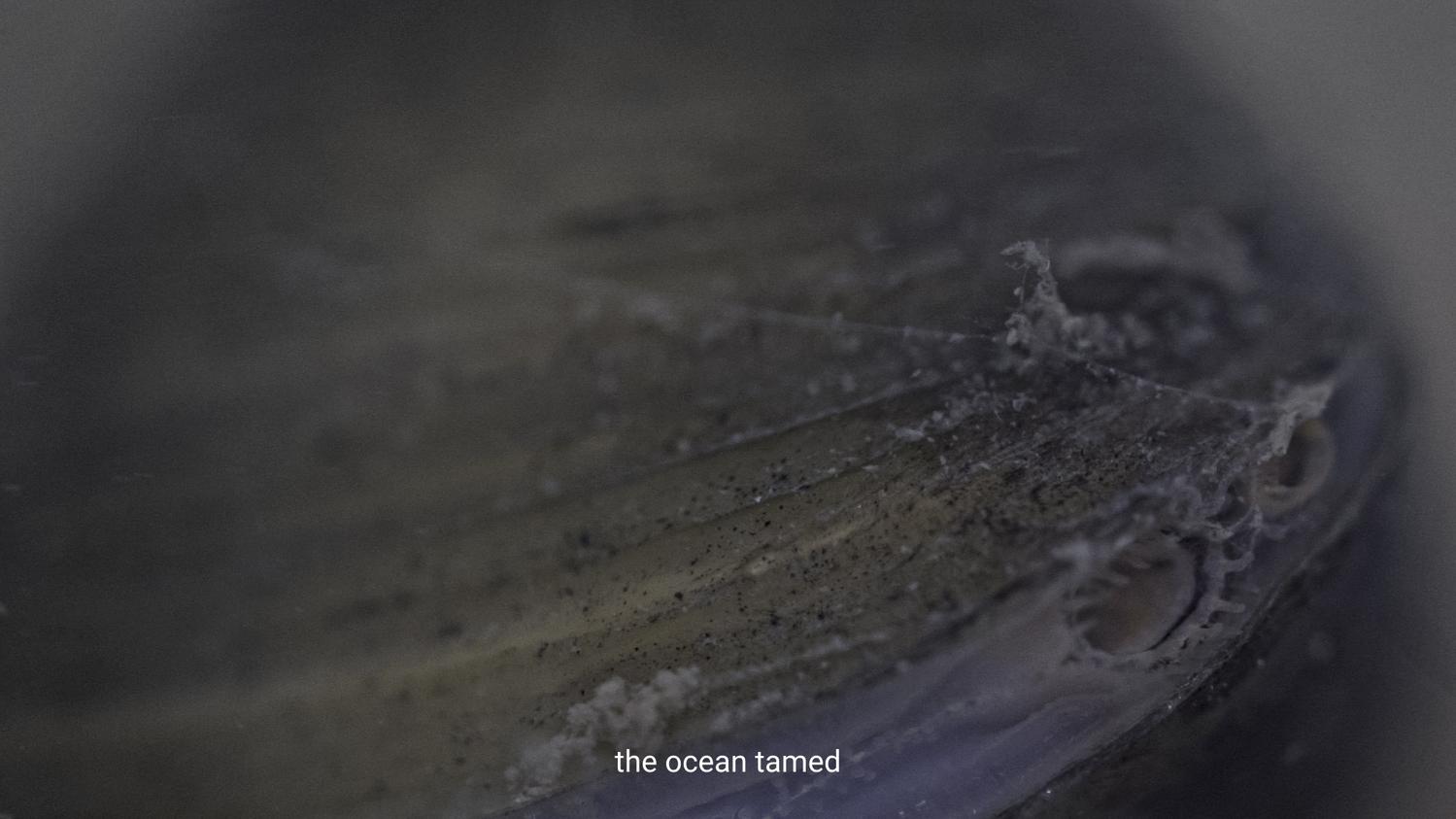The sixth Dragon Hill X ArtReview Writers Residency considers waterways as metaphors for connection as well as for the flows of power and money
‘Water’, writes Astrida Neimanis, ‘entangles our bodies in relations of gift, debt, theft, complicity, differentiation, relation.’ This winter, I spent four weeks at Dragon Hill artist residency in the French Riviera. The residency is, in many ways, idyllic: most days I sat by the pool, gazed out over the Mediterranean and wrote. The outside world felt very far away.
This individualist conception of escape is why people come here: judging from aerial views, almost every house in the area has its own private swimming pool. Such wealth, and the apparent availability of water, are connected: 1868 saw the completion of the Canal de la Siagne, a significant piece of infrastructure that diverted water from the Siagne river to serve the growing population of Cannes. The opening of the canal led to significant economic growth in the areas that it served, including Mouans-Sartoux, where Dragon Hill is located.
Today, the Canal de la Siagne is marketed as a linear park, both public utility and site of leisure. In an area dominated by cars and gated communities where every second road is interdit au public, it was one of the few places I could go running each day. The canal’s website describes it as ‘a place of peace that is essential in a world that has lost its bearings’. During my time in Mouans-Sartoux, the canal was undergoing restoration. It had been drained to reveal its flat concrete bottom, and smelled unsurprisingly rotten.

As these multiple uses suggest, human-made waterways invariably entail forms of movement other than those they intend. At a conference presentation to accompany her film Creatures of the Lines (2021), artist Sonia Levy described how the opening of Egypt’s Suez Canal in 1869 impacted sea levels and enabled largescale migration of creatures such as fish, molluscs and parasitic crustaceans from the Red Sea into the Mediterranean. This is known as the Lessepsian migration, after French count Ferdinand de Lesseps, a driving force behind the canal. Another unanticipated intrusion: in 1956 Egyptian president Gamal Abdel Nasser’s nationalisation of the Suez Canal prompted Britain and France to join Israel’s full-scale invasion.
Levy’s screening and presentation were part of ‘Waterways: Arteries, rhythms and kinship’, a three-day conference at Tate Modern in October 2024. The conference included performances, workshops, film screenings, presentations and panel discussions that forged connections through water across time and place. From her introductory speech, when curator Nabila Abdel Nabi promised a programme that would speak “from rivers to seas”, it was clear that, amid conversations about colonial extraction, racist nationalisms and ecological collapse, Israel’s then and ongoing genocide of Palestinians would never be far from our minds.
This was most explicit through a searingly brilliant collective-singing workshop led by sound artist Bint Mbareh. The workshop took place in a glass-walled room that overlooked the Thames from the top floor of Tate’s Natalie Bell Building, adjacent to the Blavatnik Building. It revolved around a poem of defiant, tempestuous clarity, awash with multiple flows (blood, piss, tears) and rivers (Jordan, Thames, Effra, Amazon, Euphrates), speaking to the complex and violent interconnectedness of water and money and power and death. As part of the communal vocalisation, we spoke together, hummed together, laughed and listened and screamed together – many voices, all lapping over each other and resonating through our bodies.
“The Thames remembers / washes in rather than washing away / washes in Blavatnik’s name / with the blood of my cousin / BLAVATNIK!”
This name we yelled, all of the gathered participants in unison, at the very tops of our voices, right in the face of power’s absence. Amid such moments of rage and grief, ‘Waterways’ also sensitively made space for moments of relaxation and joy. In their talk, for example, artist Léuli Eshrāghi conceived of water not only as a carrier of history, but also something cleansing and revitalising. At London Wetlands Centre, where the third day of the conference took place, Taey Iohe led a slow walk of connection and embodied grief, while Jumana Emil Abboud encouraged us to build new collective stories out of our own individual recollections.

Like Neimanis, Bint Mbareh bathed in the muddy materialities of waterways (“broken pipes”, “old fish”, “amphetamine rush”), here to trace complicity in genocide. In particular, the work paid unflinching attention to one of Tate’s sponsors: billionaire Len Blavatnik. The building in which the work took place was named for Blavatnik, after he donated £50 million to Tate in 2016. Blavatnik has also made financial contributions to the Courtauld Gallery, National Portrait Gallery and the University of Oxford (from where a professor resigned following Blavatnik’s donation to Donald Trump’s 2017 inauguration).
Flows of power and money can be harder to track than migrating molluscs. Blavatnik has been under sanctions by the Ukrainian government since 2023, but the exact nature of his apparent ongoing ties to Russia remains opaque. Much more transparent is Blavatnik’s financial and political support for Israel. In the US, where he is a citizen, Blavatnik has donated to both Republican and Democrat parties, ‘motivated by his desire to further a pro-business, pro-Israel agenda’, according to a statement issued by his investment company. In March 2024, six months into the current genocide, Blavatnik (who coproduced the 2023 film The Zone of Interest) responded to director Jonathan Glazer’s Oscar speech through a statement insisting that ‘his long-standing support of Israel is unwavering’. Three months later, Blavatnik was accused in an editorial published by Israeli newspaper Haaretz of censoring that country’s Channel 13 broadcaster, in which he holds a majority stake, in support of Prime Minister Benjamin Netanyahu.

With Bint Mbareh’s text connecting multiple waterways, our performance of it forged connections between multiple bodies and voices to emphasise communality as a form of resistance. Throughout 2024 I was one of many people involved in campaigning to end the cultural sector’s complicity in the genocide of Palestinians. It was a year of anger, frustration and grief, but one that was also shaped by the rich textures of collective organising. Since October 2023 I’ve found myself crying at all the wrong moments. Bint Mbareh’s work spoke to all of this at once. At a time when marginalised people are abused by politicians and racist rightwing media for speaking out for Palestine, this work opened a space to grieve and rage together, and precisely in doing so as a group it made it safe for everyone. I find myself thinking of rivers, flowing together. In art as in activism, sometimes it is setting individuality aside that enables us to find our voice.
Every day at Dragon Hill I looked out over the Mediterranean. While the Suez Canal enabled many introduced species to thrive in their new home, the same sea has in recent years become one of the most dangerous places on earth. It is estimated that between 2014 and 2024, some 30,000 refugees have drowned there. Many have been fleeing wars directly caused by European countries and their allies. The body responsible for enforcing the EU’s border policies, Frontex, has been accused of a lack of accountability and complicity in the torture and mass death of tens of thousands of people. Nonetheless, Frontex has seen its budget rise from €6m in 2006 to €922m last year. Part of the most recent budget increase is to pay for drones, such as the Israeli-made Heron, which, as Antony Lowenstein writes in his book The Palestine Laboratory (2023), has been used for years in Palestine, enabling Israel Aerospace Industries to market them as ‘battle-tested’ to buyers such as India and France.
At Dragon Hill, as I read and reread lines from Bint Mbareh’s poem, I tried to think through these connections between water and life, water and death. The Thames is a tidal river, Bint Mbareh reminded me: the objects that wash up on its shores can be surprisingly well preserved. Water is a carrier of memory. I am also trying to think tidally, returning again and again to the same places, texts, ideas. Washing in rather than washing away. And if I’ve learned one thing, it is this: however much money people spend to put their names on art galleries, it will never wash away the blood. Not if we can be a chorus, continually sounding the truth out loud together.
Tom Jeffreys is a writer and editor based in Edinburgh
This story was amended on 10 March. The previous version incorrectly stated that Hyundai Motor, which sponsors Tate, also provides heavy machinery to the IDF, when it is in fact Hyundai Heavy Industries. The two are independent companies.
